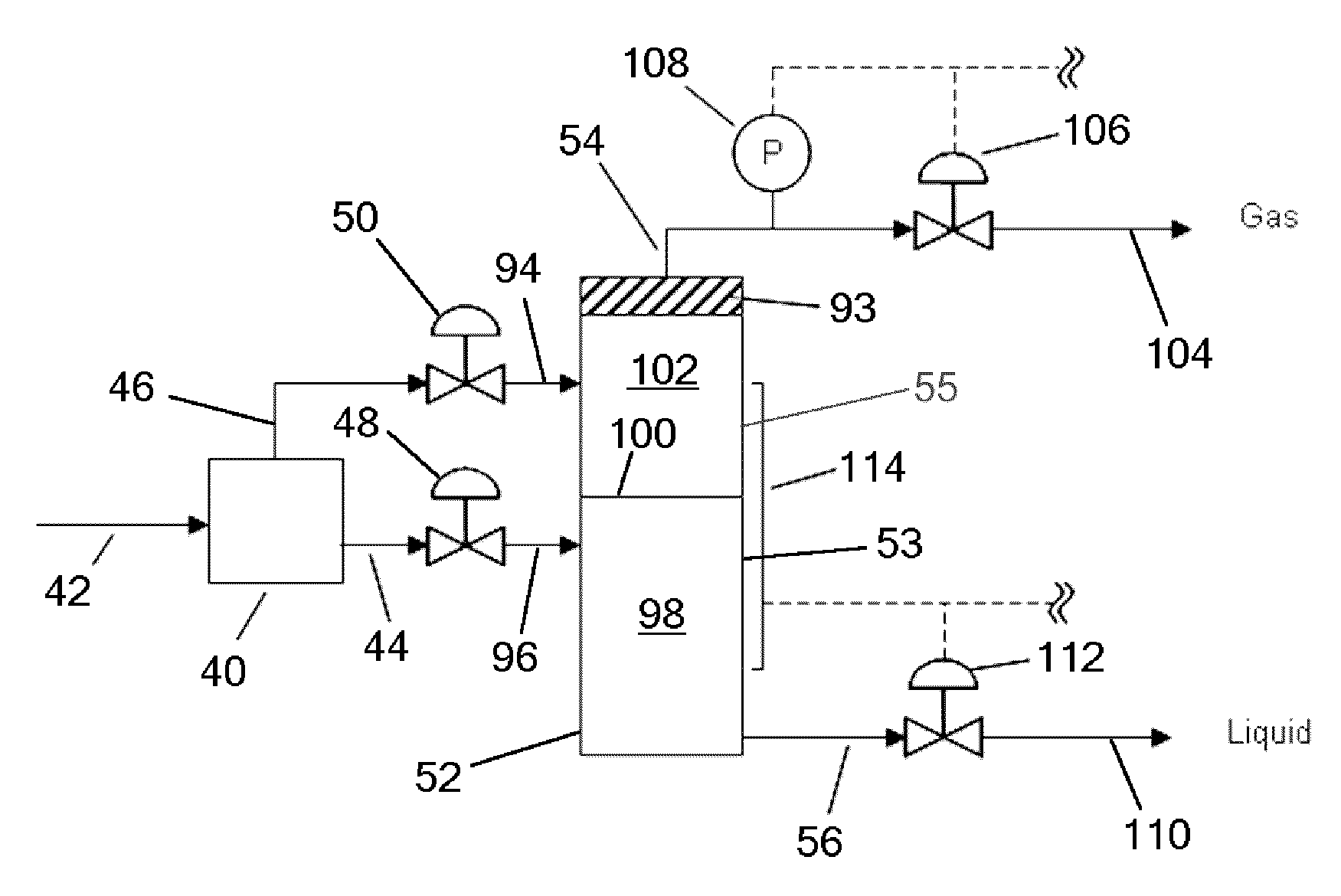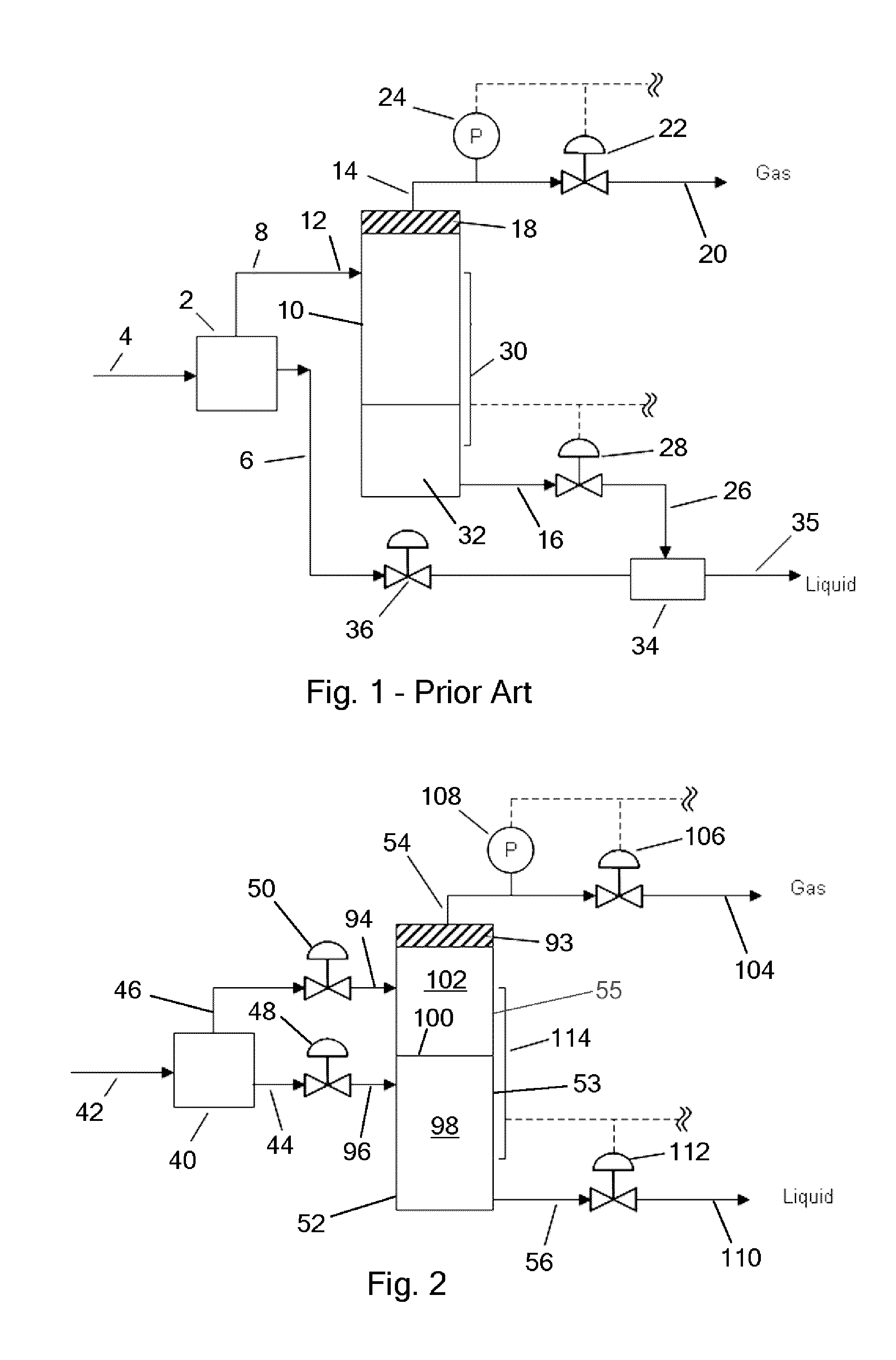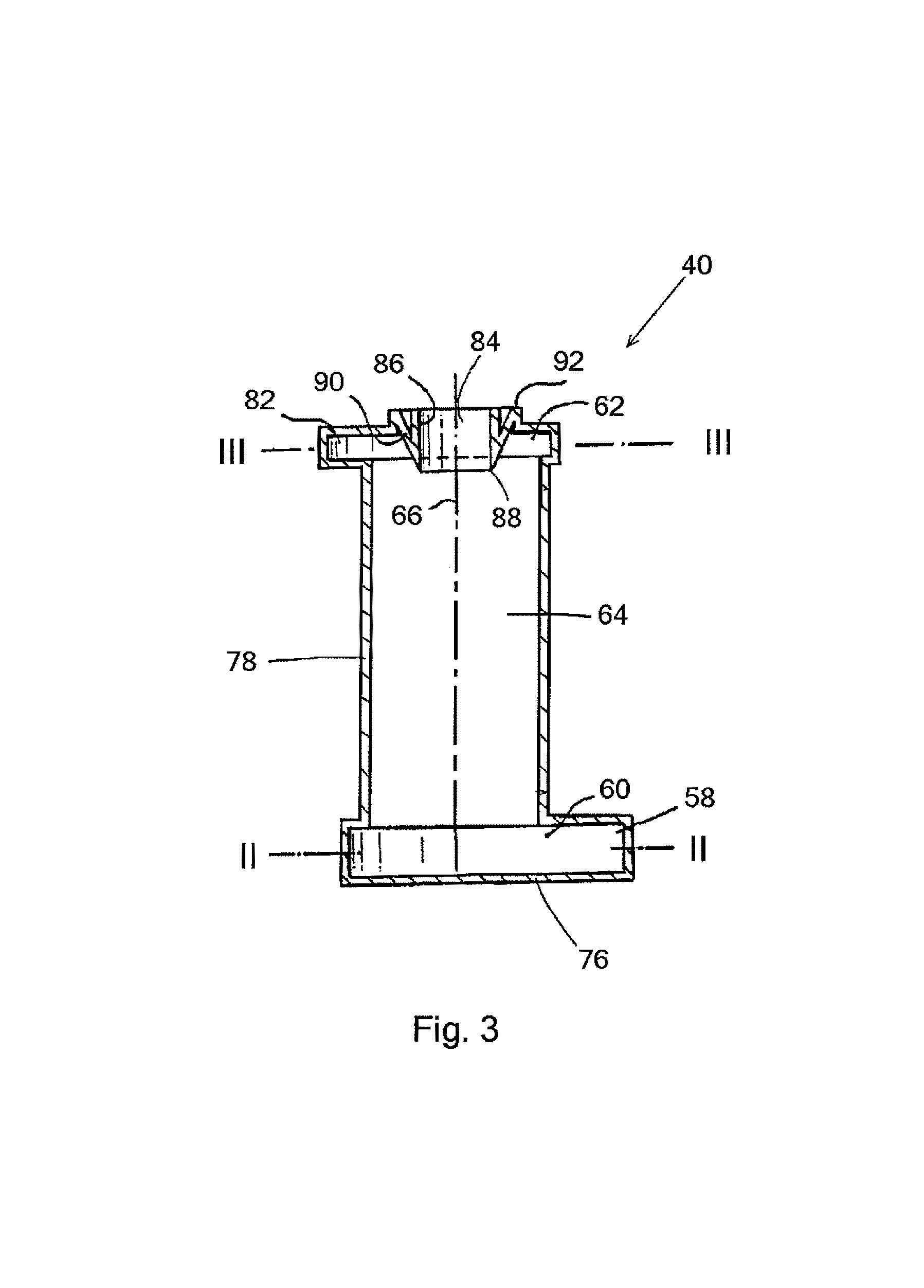Apparatus for and method of separating multi-phase fluids
a multi-phase fluid and apparatus technology, applied in the direction of liquid separation, chemistry apparatus and processes, single direction vortex, etc., can solve the problems of erratic and variable flow of multi-phase fluids entering the separator, large size and fluid inventory, and inability to meet the needs of additional pipework, so as to avoid the need for additional pipework and compact unit
- Summary
- Abstract
- Description
- Claims
- Application Information
AI Technical Summary
Benefits of technology
Problems solved by technology
Method used
Image
Examples
Embodiment Construction
[0055]FIG. 1 shows a prior art compact separation system. The system includes a compact uniaxial cyclonic separator 2 having an inlet line 4 for multi-phase fluids, a first outlet line 6 for relatively high density fluids (primarily liquid) and a second outlet line 8 for relatively low density fluids (primarily gas). The second outlet line 8 is connected to a conventional knock-out vessel 10. This consists of a cylindrical vessel that is mounted with its longitudinal axis vertical. The vessel has an inlet 12 that is connected to receive the low density fluids from the cyclonic separator 2, a first outlet 14 at its upper end for gas and a second outlet 16 at its lower end for liquid. The knock-out vessel 10 also includes a mist extractor 18 at its upper end for removing mist from the gas flowing towards the gas outlet 14.
[0056]The first outlet 14 is connected to a gas outlet line 20, the pressure of gas being controlled by an adjustable valve 22 that may be operated automatically dep...
PUM
| Property | Measurement | Unit |
|---|---|---|
| angle | aaaaa | aaaaa |
| angle | aaaaa | aaaaa |
| diameter | aaaaa | aaaaa |
Abstract
Description
Claims
Application Information
 Login to View More
Login to View More - R&D
- Intellectual Property
- Life Sciences
- Materials
- Tech Scout
- Unparalleled Data Quality
- Higher Quality Content
- 60% Fewer Hallucinations
Browse by: Latest US Patents, China's latest patents, Technical Efficacy Thesaurus, Application Domain, Technology Topic, Popular Technical Reports.
© 2025 PatSnap. All rights reserved.Legal|Privacy policy|Modern Slavery Act Transparency Statement|Sitemap|About US| Contact US: help@patsnap.com



